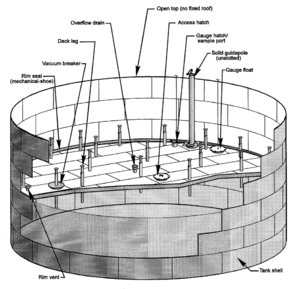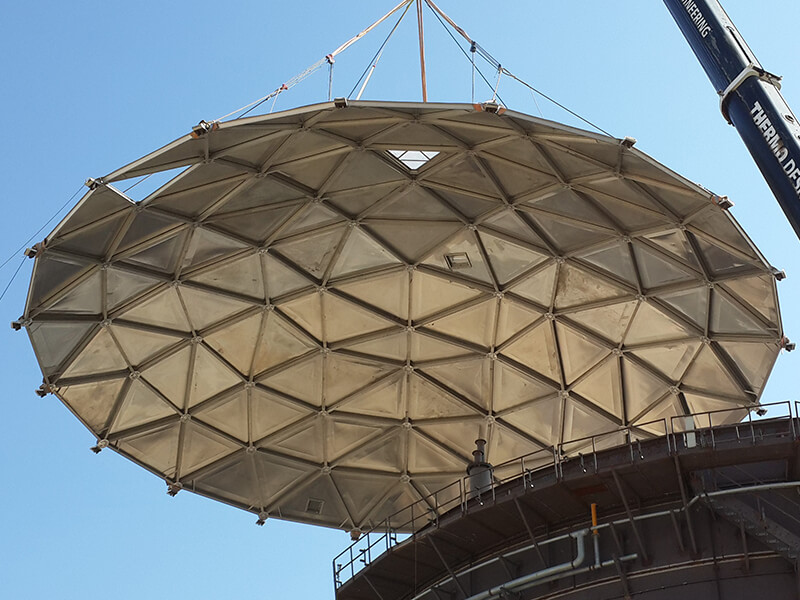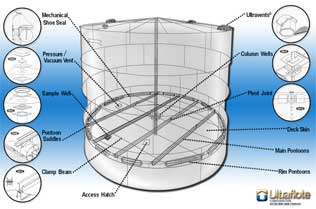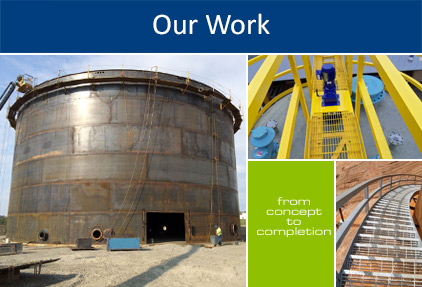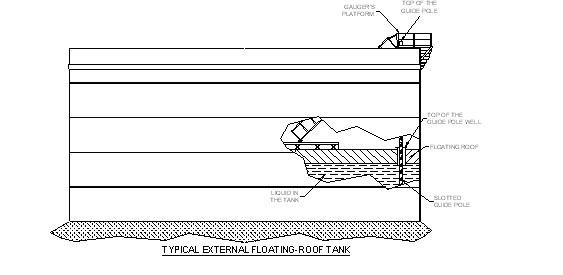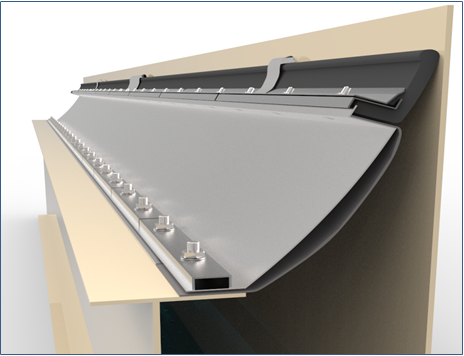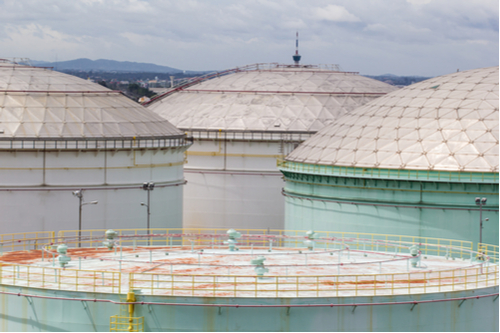External Floating Roof Tank Design

The floating roof rests on the liquid and floats up and down as the level changes.
External floating roof tank design. Our seals solutions provide an optimal combination of reliability and. It also serves at a safety device reducing the risk of combustible vapours in this area. The design of these primary seals is therefore very important. Floating roof tanks are commonly protected against lightning ignition by bonding the floating roof to the seal shoes at no less than 3m 10ft intervals use of insulating sections in the hanging linkages covering sharp points on hangers with insulating materials and installation of electrical bond straps across each pinned hanger joint.
An external floating roof tank is a storage tank commonly used to store large quantities of petroleum products such as crude oil or condensate. Because the flexible floating roof deck can float up and down to close to the liquid level gas space above the liquid level can be greatly reduced thereby greatly reducing the evaporation. Tanks with external floating roofs are used primarily to contain liquids with high vapor pressures when the vapor emissions from fixed roof tanks would exceed the standards set by the local jurisdiction. The floating roofs can be either external i e with open top tanks or internal i e inside fixed roof tanks.
These are categorized as external floating roofs which are designed to meet requirements of api standards 650 appendix c. External floating roof and internal floating roof. Types of floating roofs in storage tanks. It consists of an open.
Floating roof is the core component of floating roof storage tank which is divided into two types. The principal types of floating roof designs which are installed in tanks which store crude and middle distillate products are summarized below. External floating roof tanks are generally made of steel and only has a floating roof as the top covering. Main two types of floating roof tanks single deck floating roof in single deck roof which is also called pontoon roof the buoyancy is derived by the pontoons according to api 650 3.
The roof rises and falls with the liquid level in the tank. 2 14 floating roof design 31 2 15 special consideration 32 2 15 1 soil settlement 32 2 15 2 seismic design for floating roof 33 2 16 failure mode due to seismic effects on floating roof tank 34 2 17 fitting design and requirement 36. It consists of an open topped cylindrical steel shell equipped with a roof that floats on the surface of the stored liquid. External floating roof tanks external floating roof tanks have a floating roof which covers the liquid inside.


